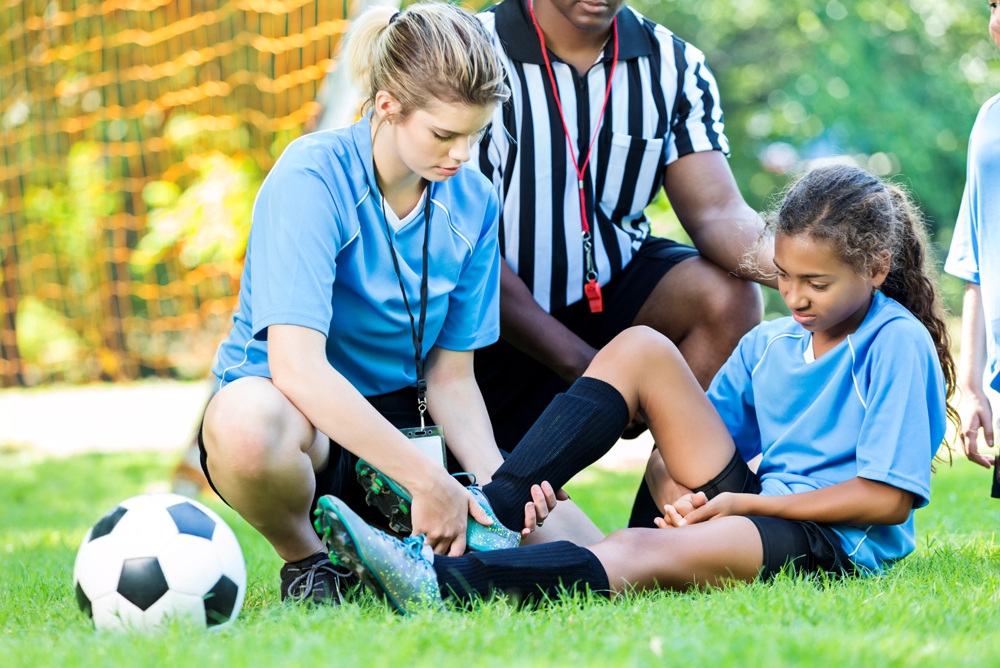
Summer isn’t always carefree: preventing pediatric sports injuries
If your kids are in summer sports and training camps, you’ve probably spent many evenings cheering them on at games and tournaments. Unfortunately, you may also have experienced those gut-wrenching moments when they fall, collide, or overexert themselves and become injured.
No parent wants to see their child get hurt — regardless of whether it is a minor cut and bruise or a serious strain or tear. But it is important to be prepared if they are sidelined. Learn about the types of injuries your kids may encounter and how they should be handled when you can’t immediately be by their side.
Common sports injuries
During the summer, kids often go to camps that specialize in football, soccer, baseball and softball, basketball, tennis, and track and field. According to Dayna Phillips, MD, a pediatric orthopedic surgeon at Summit Health who specializes in pediatric orthopedics and sports medicine, this is the time when our young athletes are in pre-season or summer training for fall and winter sports. When school starts, many will be trying out for spots on varsity and junior varsity teams.
All sports carry some degree of risk, explains Dr. Phillips, whether it’s because of contact with bodies or equipment, impact with the ground or other surfaces, or repetition of movement. Some of the most common injuries include:
- Knee injuries, including ligament and meniscus tears
- Knee hyperextension injuries
- Groin injuries
- Pelvic avulsion fractures, which are when a muscle or tendon pulls a piece of bone away
- Ankle sprains
- Ankle fractures
- Wrist and hand fractures
- Concussions
Making the call
Parents often feel helpless and confused when their kid gets hurt playing a sport. It’s even worse when they’re at a camp or training program, out of physical reach. You may be unsure what to do first. And how about if you’re the coach, counselor, or guardian who’s ultimately responsible?
While upsetting, injuries come with the territory and are typically not a cause for extreme alarm. Parents generally do not need to rush off to camp — there are protocols in place for when a child is injured.
For starters, along with notifying the parents or guardians of an injured athlete, Dr. Phillips says, “the athlete should be pulled from the activity until further evaluation. If a physician is affiliated with that league or camp, notifying that physician can help get the athlete seen and treated more efficiently.”
Treatment depends on the injury and can include:
- RICE (rest, ice, compression, and elevation)
- Activity modification
- Self-directed exercises
- Over-the-counter medications for pain
- Physical therapy
- Surgery
Even if the injury seems minor or the athlete is determined to play after only a few days of rest, consult a health care provider. “Encouraging the athlete to be seen by a physician for clearance is important because sometimes when symptoms improve, athletes will try to return before being properly evaluated," says Dr. Phillips.
Head injuries should always be taken seriously. Any athlete who is hit in the head should stop playing immediately and be evaluated for a concussion. If they lose consciousness, even briefly, call 911 right away. Other signs of a concussion that require immediate medical attention include appearing confused, dazed, or forgetful, headache, nausea or vomiting, dizziness, and blurred vision.
Injury prevention tips
These days, young people invest themselves in one or two sports and specialize in them all year round. Dr. Phillips says this strategy, while effective for skill-building, is risky. “Constant use of the same muscle groups can lead to overuse injuries,” she says. “Giving your muscles adequate rest is very important.”
That is why it’s smart to incorporate cross-training methods or play additional sports. Simply giving your child’s body time off from using the same muscle groups — for at least a few months a year — can help prevent injury. Rest is particularly important when a child is complaining about pain.
“Playing through pain is never a good idea and can worsen an injury,” says Dr. Phillips. “Pain is your body’s way of telling you something is wrong, and athletes shouldn’t ignore it.
Remember to stay hydrated and calm
Heat is just as dangerous to a young athlete as a hole in a soccer field. “It’s easy to think about the potential musculoskeletal injuries that occur with athletics, but heat exhaustion and stroke are conditions that can develop and have significant, adverse effects on an athlete,” says Dr. Phillips. “Staying hydrated is important, especially during the summer months.”